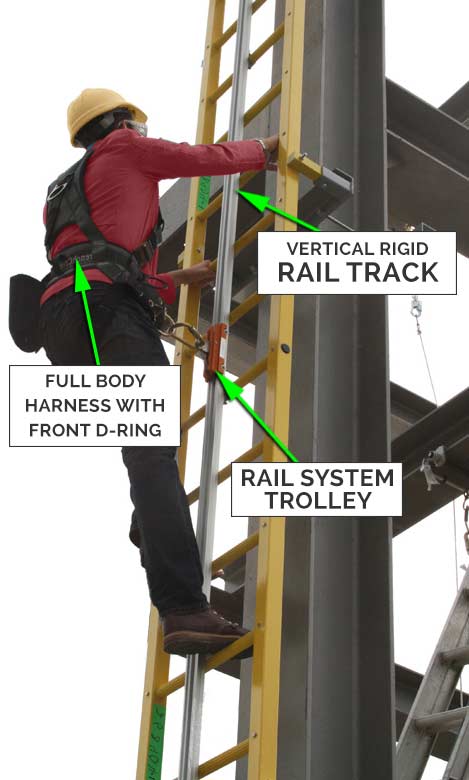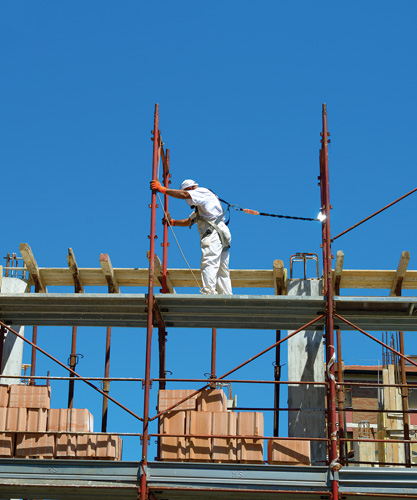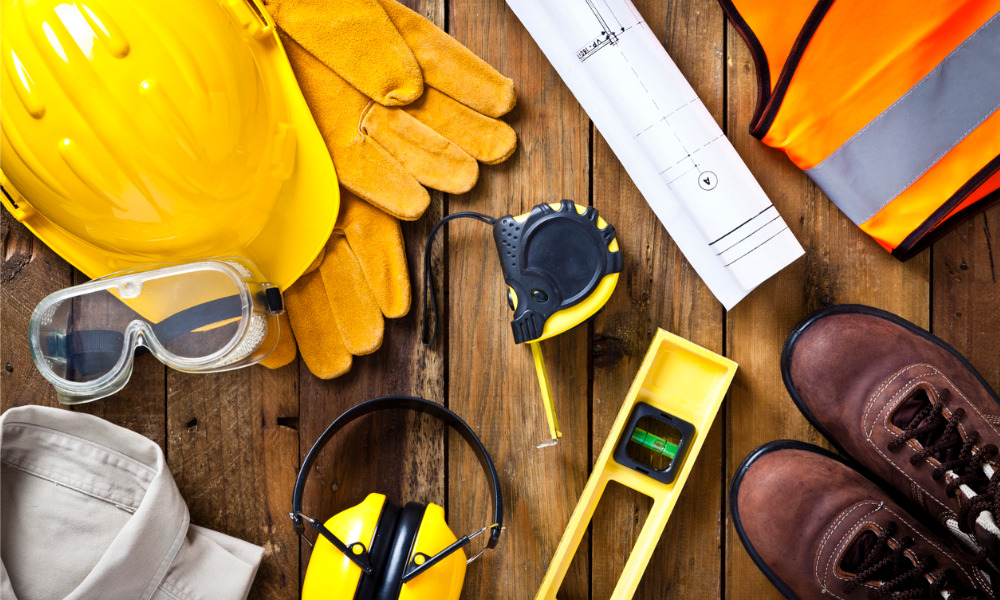Fall Protection.
The most frequently cited criterion in the construction sector and one of the major factors contributing to worker fatalities is the requirement for fall protection. To protect employees, employers need to improve their evaluation of job sites and implementation of fall prevention measures.
Workers: It is the responsibility of workers to become familiar with any potential fall hazards on a job site. Never perform any type of work in an area without fall safety measures. Before each use, employees who use personal fall arrest devices should check to make sure they are in good working order and are damage-free
Employers: When walking or working on surfaces with unprotected edges or sides that are six feet above a lower level, employers are obligated to implement fall prevention equipment to protect their employees. Some fall prevention measures are guardrails, safety nets, and individual fall arrest devices.

Stairways & Ladders.
One of the main reasons for falls among construction workers that result in injury or death is improper ladder use. Ladder falls can occur for a variety of reasons, such as poor ladder selection, improper ladder security, and carrying tools and materials by hand while ascending.
Workers: Always keep three points of contact—both feet and at least one hand—as you climb and descend a ladder, workers. Portable ladders must be long enough to be extended three feet above the work surface and placed at a stable angle. To prevent slipping or falling, workers should attach ladders to a solid object at the top and bottom.
Employers: Before each use, a qualified someone should inspect all ladders. In order to prevent further damage, defective ladders should be labeled tagged out, and removed from service. Workers need to receive training on ladder safety and how to choose the best ladder for the task.

Scaffolds.
Workers: When working on, underneath, or close to a scaffold, hard helmets should be worn. To avoid slips and falls and to safeguard others working below, employees should also use tool lanyards and wear durable, non-skid work boots when working on scaffolds.
Employers: Only a qualified individual should design, install, and remove any scaffolding. Each day before work begins, a competent person should check the scaffolding to make sure it is fit for use.

General Safety And Health Provisions.
To prevent contractors and subcontractors from forcing construction workers to “work in surroundings or under working conditions which are unclean, harmful, or dangerous to their health or safety,” this regulation was created.
Workers: The most important lesson to be learned from this standard is that workers need to be aware that there are safeguards in place to ensure their safety while on the job site. This entails acquiring the appropriate instruction for a particular occupational duty and receiving personal protection equipment (PPE).
Employers: In order to safeguard employees and avert accidents, employers are required to adopt safety initiatives. Inspections of project sites, machinery, and materials must be performed by a competent person(s). Part of this responsibility is to make sure that non-compliant tools and machinery are taken out of service by locking, tagging, or being removed from the job site. Any applicable general industry standard that is similar to or appropriate takes a back seat to construction requirements.



